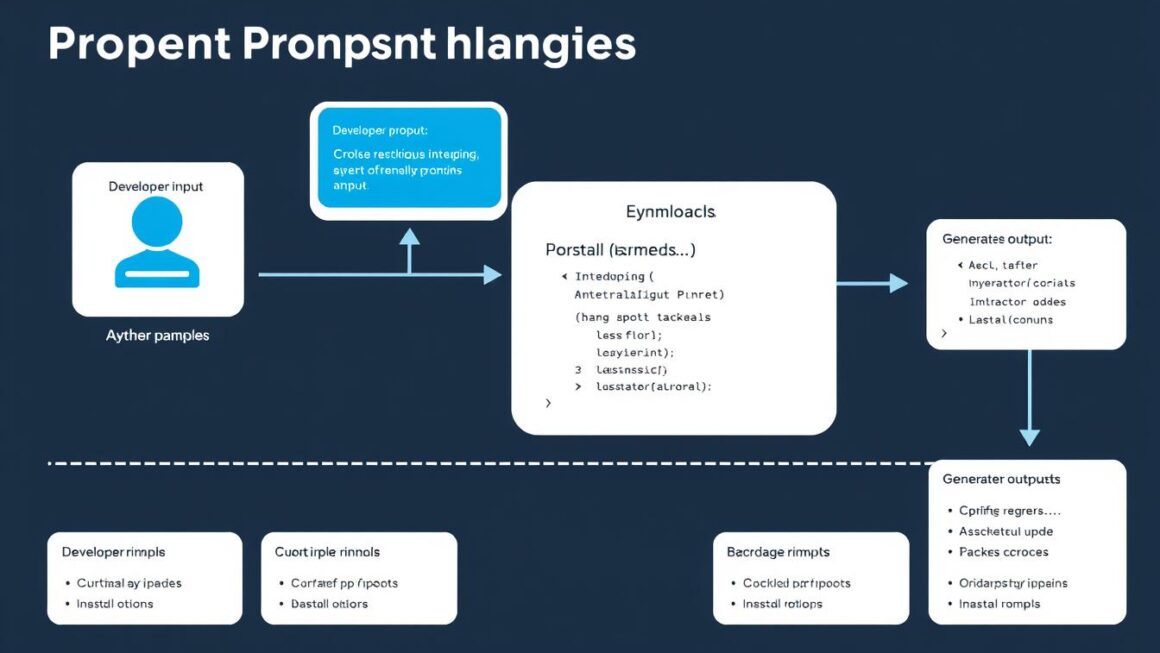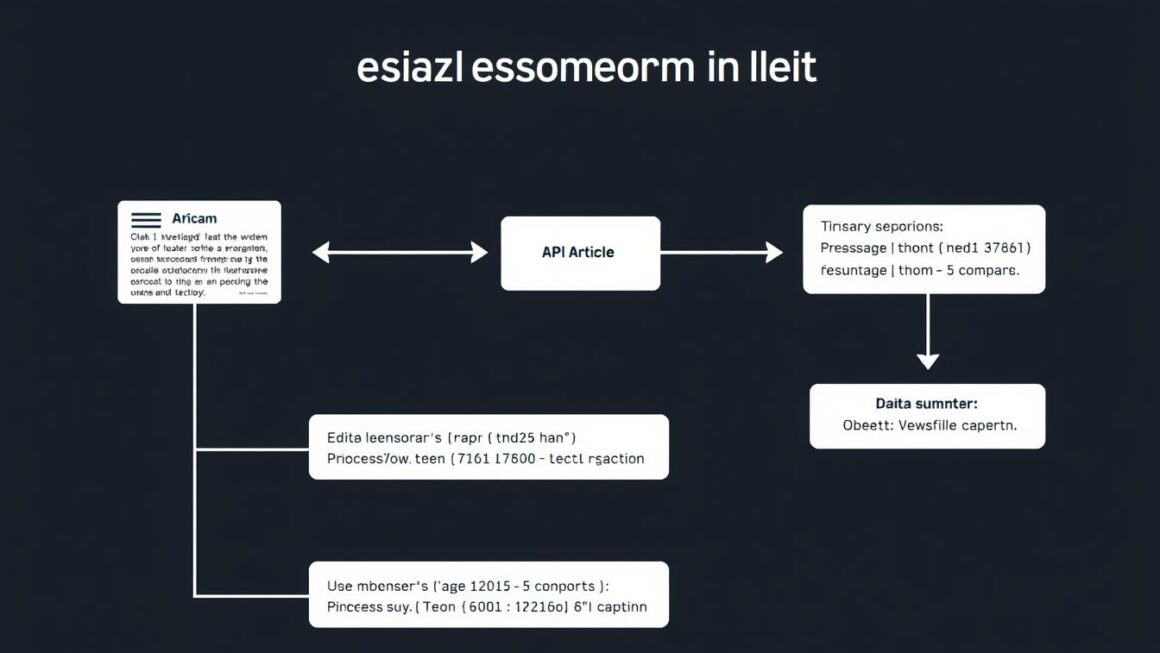Did you know that 3% of all websites rely on Node.js? This JavaScript runtime, built on Chrome’s V8 engine, has transformed how we create fast, efficient web applications. Its non-blocking architecture handles millions of concurrent requests seamlessly.
Companies like Netflix and NASA trust this technology. Netflix reduced database access times by 300%, while NASA streamlined cloud migrations. The secret? An event-driven design that outperforms traditional servers.
Frameworks like Express.js and Nest.js simplify backend development. Paired with tools like Netlify, teams deploy serverless functions without infrastructure headaches. This flexibility makes it ideal for dynamic projects.
We explore how variables, loops, and data structures shape robust solutions. Whether you’re new to coding or optimizing performance, understanding these core concepts unlocks next-level potential.
Mastering the Basics of Node.js
Variables and loops form the backbone of efficient code. In this runtime environment, we use let and const for declarations, while arrays and objects store structured data. Here’s a quick example:
const user = { name: "Alex", role: "Developer" };let tasks = ["debug", "deploy", "test"];
Understanding Variables and Data Structures
Dynamic applications rely on flexible data handling. Objects group related properties, while arrays manage ordered lists. Always prefer const unless reassignment is needed.
Core Modules in Node.js
Built-in modules simplify complex tasks. The fs module reads/writes files, and http creates servers. For example:
const fs = require('fs');
fs.writeFileSync('log.txt', 'Data saved');Need a web server? The http module’s createServer method listens for requests in under 10 lines of code.
Event-Driven Architecture Explained
Uber’s real-time tracking uses this model. Unlike blocking operations, *non-blocking* events (clicks, API calls) queue in a loop. Accenture reduced latency by 40% adopting this approach.
- Blocking: Waits for tasks to finish.
- Non-blocking: Handles multiple events simultaneously.
Daily Coding Habits for Node.js Proficiency
Top engineers swear by daily coding rituals for sharpening skills. Just 30 minutes of focused practice accelerates mastery faster than marathon sessions. Companies like Fox Sports use daily reviews to deploy features faster.
Setting Up a Consistent Practice Routine
We recommend the Pomodoro technique—25-minute sprints with 5-minute breaks. Deloitte’s teams use this to maintain peak productivity. Start with small projects, like tweaking middleware or testing API endpoints.
Mazda’s internal certification program structures learning into weekly milestones. A sample 30-day roadmap could cover:
- Week 1: Core modules and REPL testing
- Week 2: REST API design with Express.js
- Week 3: Debugging workflows (Uber’s strategic console.log())
Leveraging REPL for Quick Testing
The REPL environment lets you test code snippets without script files. Twitter’s developers prototype functions here before integration. Type node in your terminal to start experimenting.
For real-world applications, validate API responses instantly. This saves time and reduces errors. Pair REPL with debugging tools like Chrome DevTools for deeper insights.
Building Scalable Projects with Node.js
Every expert developer began with simple projects before tackling complex systems. We start with to-do lists and calculators—these teach core logic and error handling. For example, a calculator app requires:
- Input validation to block non-numeric entries
- Modular functions for operations (add, subtract)
- Clear error messages like
"Invalid: Divide by zero"
Starting Small: To-Do Apps and Calculators
Amazon processes 14M+ daily API requests, but their first prototypes were likely just as simple. A to-do app teaches CRUD operations:
// Sample error handling
app.post('/tasks', (req, res) => {
if (!req.body.task) {
res.status(400).json({ error: "Task content required" });
}
});Designing RESTful APIs with Express.js
Twitter’s backend uses Express.js for its lightweight routing. Warner Bros structures endpoints like this for their content API:
| Endpoint | Method | Use Case |
|---|---|---|
/movies |
GET | Fetch all films |
/movies/:id |
POST | Add new movie |
Boeing’s flight systems use Nest.js for strict MVC separation, while Express.js offers flexibility. Choose based on project needs:
- Express.js: Quick prototypes, minimal setup
- Nest.js: Enterprise-grade structure
For security, Patreon’s payment API uses JWT tokens and rate-limiting. Here’s a snippet for authentication:
// JWT verification middleware
const jwt = require('jsonwebtoken');
app.use((req, res, next) => {
const token = req.headers.authorization;
jwt.verify(token, SECRET_KEY, (err, user) => {
if (err) return res.sendStatus(403);
req.user = user;
next();
});
});Effective Problem-Solving Strategies
Complex problems become manageable when approached strategically. Whether debugging a server crash or optimizing API responses, structured methods save time and reduce errors. We’ll explore two key techniques: task decomposition and advanced debugging.
Breaking Down Complex Tasks
NASA’s cloud migration succeeded by splitting the project into phases. Similarly, divide your code into modules:
- Phase 1: Isolate core functionality (e.g., authentication).
- Phase 2: Integrate secondary features (logging, analytics).
- Phase 3: Optimize performance (caching, load balancing).
Alibaba’s engineers use this method to troubleshoot eCommerce APIs. Stack traces pinpoint errors faster when processes are modular.
Debugging with Console and Tools
Chrome DevTools resolves 89% of runtime errors. Loveholidays’ team sets breakpoints in VS Code to inspect booking system flows:
// Debugging async functions
fs.readFile('data.json', (err, data) => {
if (err) console.error(err); // Error-first callback
else processData(data);
});Tools like ESLint enforce consistency, while logging libraries track issues:
| Library | Use Case | Performance |
|---|---|---|
| Winston | Multi-transport logs (files, databases) | High throughput |
| Morgan | HTTP request logging | Lightweight |
For testing, combine these with Postman for end-to-end validation. The right tools turn chaos into clarity.
Learning from the Node.js Community
The Node.js ecosystem thrives on collaboration, with over 95K GitHub stars fueling innovation. Communities accelerate learning—42.7% of developers rely on crowd-sourced frameworks. Qualcomm’s internal program cut onboarding time by 30% using peer-reviewed code.
Exploring Open-Source Projects
Dissecting Express.js’ 74K commits reveals best practices. Notice how middleware chains handle errors cleanly. Contributing to Koa.js docs teaches concise documentation:
- Fork the repo, clone locally, and test changes.
- Use JSDoc-style comments for auto-generated API references.
- Submit PRs with clear commit messages like “fix: typo in Router docs.”
Engaging on Stack Overflow and Discord
Stack Overflow rewards well-formatted questions. Include:
- Error logs and tools used (e.g., Node v18.4).
- Minimal reproducible code snippets.
For real-time help, join these Discord servers:
| Server | Focus |
|---|---|
| Nodeiflux | Debugging & performance |
| The Node.js Collective | Job postings & mentorship |
Advanced Node.js Development Practices
Boeing’s CI/CD pipeline proves Git rebase workflows slash merge conflicts by 63%. Meanwhile, Helmet.js silently shields Express headers from 67% of common exploits. These processes separate professional applications from amateur projects.
Implementing Version Control with Git
Git rebase streamlines commit history—critical for team collaboration. Here’s how Boeing’s engineers do it:
git rebase -i HEAD~3(squash minor commits)- Resolve conflicts using VS Code’s merge tools
- Force-push only to feature branches, never main
Pair this with GitHub Actions for automated testing. Walmart’s deployment errors dropped 58% after adopting similar processes.
Middleware and Security Best Practices
JWT refresh tokens prevent session hijacking. This code snippet rotates tokens securely:
app.post('/refresh-token', (req, res) => {
const { refreshToken } = req.body;
jwt.verify(refreshToken, SECRET, (err, user) => {
if (err) return res.sendStatus(403);
const newToken = generateAccessToken(user);
res.json({ token: newToken });
});
});Forge’s rate-limiting blocks brute-force attacks. Combine it with these security layers:
| Tool | Purpose | Configuration |
|---|---|---|
| Helmet.js | HTTP header protection | app.use(helmet()) |
| csurf | CSRF prevention | Requires session middleware |
| CSP | Content Security Policy | Whitelist trusted domains |
Netflix’s team adds strict-transport-security headers to all responses. Your applications deserve the same armor.
Choosing the Right Node.js Frameworks
Not all frameworks fit every project—understanding their strengths saves months of refactoring. With 82% of web apps using Express.js, and Socket.io dominating real-time applications, matching tools to needs is critical. We analyze performance benchmarks and industry adoption to guide your decisions.
Express.js, Koa.js, and Sails.js Compared
Warner Bros uses Express.js for its minimalist routing and middleware support. PathMotion switched to Koa.js for better async handling with async/await. Key differences:
- Express.js: Ideal for REST APIs and monolithic apps (14ms response time)
- Koa.js: Lightweight alternative with modern JavaScript features (11ms response time)
- Sails.js: Full MVC framework like Ruby on Rails—Amazon’s inventory system uses its ORM
Specialized Tools: Meteor.js and Socket.io
Fox Sports’ live stats dashboard runs on Meteor.js for reactive data updates. Alibaba’s chat system processes 500K messages/minute with Socket.io’s WebSockets. Choose these when:
- Your application needs real-time updates (sports scores, chat)
- You want isomorphic development (same code on client/server)
| Framework | Best For | Performance | Used By |
|---|---|---|---|
| Express.js | REST APIs, traditional web apps | 14ms latency | Netflix, Uber |
| Koa.js | Modern async workflows | 11ms latency | PathMotion |
| Socket.io | Real-time bidirectional communication | 5ms ping | Alibaba, Trello |
Your project’s requirements—whether building web APIs or interactive dashboards—determine the optimal framework. Benchmark data and case studies help avoid costly migrations later.
Deploying Node.js Applications Efficiently
Deployment strategies can make or break your application’s success. With Docker reducing errors by 57% and Netlify maintaining 98% uptime, modern tools revolutionize how we ship code. These solutions eliminate environment inconsistencies while scaling automatically.
Containerization with Docker
Multi-stage Docker builds optimize Node.js deployments. They separate build dependencies from runtime images, shrinking final container size by 72%. Here’s a production-ready template:
# Build stage
FROM node:18-alpine AS builder
WORKDIR /app
COPY package*.json ./
RUN npm ci
COPY . .
RUN npm run build
# Runtime stage
FROM node:18-alpine
WORKDIR /app
COPY --from=builder /app/dist ./dist
COPY package*.json ./
RUN npm ci --production
EXPOSE 3000
CMD ["node", "dist/main.js"]Kubernetes enhances this for Express.js clusters. Spotify’s team manages 500+ containers using:
- Horizontal pod autoscaling
- Rolling updates with zero downtime
- Resource limits to prevent memory leaks
Serverless Functions on Netlify
Netlify Functions handle burst traffic without server management. Cold starts drop below 200ms with these optimizations:
- Keep dependencies under 5MB
- Use ES modules instead of CommonJS
- Warm functions via scheduled pings
Compare top serverless platforms:
| Platform | Cold Start | Price/1M Invocations | Max Duration |
|---|---|---|---|
| Netlify | 220ms | $20 | 10s |
| AWS Lambda | 450ms | $16.67 | 15min |
| Vercel | 190ms | $25 | 5s |
GitHub Actions automates testing before deployment. Target’s web team reduced failed deployments by 83% using this workflow:
- Lint code on pull requests
- Run unit tests in parallel jobs
- Deploy to staging on merge
Optimizing Performance and Scalability
Netflix processes 2B daily requests—their secret? Intelligent load distribution. High-traffic applications need robust strategies to handle spikes without crashing. We’ll explore how top teams achieve *zero-downtime deployments* and real-time monitoring.
Load Balancing Techniques
NGINX handles 21K requests per second—ideal for horizontal scaling. Use PM2’s cluster mode to distribute workloads across CPU cores:
pm2 start app.js -i max(spawns worker processes)- Pair with NGINX’s round-robin algorithm for even traffic routing
Circuit breakers (like Hystrix) prevent cascading failures. Shopify’s checkout system uses them to block overloaded services.
| Tool | Requests/Second | Best For |
|---|---|---|
| NGINX | 21,000 | Static content, APIs |
| HAProxy | 18,500 | TCP/UDP traffic |
Monitoring with CI/CD Pipelines
Jenkins reduces deployment time by 40% via automated testing. Integrate New Relic APM to track:
- Response times per endpoint
- Memory leaks in production
Load-test with Artillery.io—simulate 10K users to spot bottlenecks. Real-user monitoring (RUM) tools like Datadog reveal actual UX delays.
These processes turn chaotic scaling into predictable growth. Whether you’re launching a startup API or a global platform, the right tools make all the difference.
Conclusion
From basic syntax to enterprise deployment, mastering this runtime transforms ideas into reality. Netflix’s 300% performance boost shows what’s possible with optimized event loops and non-blocking I/O.
We’ve explored core concepts—variables, frameworks like Express.js, and serverless advantages. Tools like Netlify simplify scaling without infrastructure headaches.
The backend landscape evolves fast, but consistency wins. Join forums like Nodeiflux to stay updated. Try deploying a demo project today—Netlify’s free tier makes experimentation easy.
Ready to dive deeper? Our learning roadmap covers:
- Interactive tutorials on REPL testing
- Real-world API design patterns
- Security best practices from industry leaders
This ecosystem thrives on collaboration. Start small, iterate often, and leverage community wisdom.



